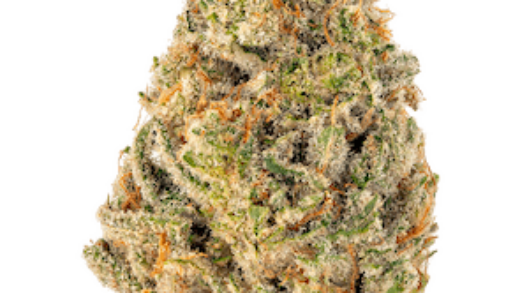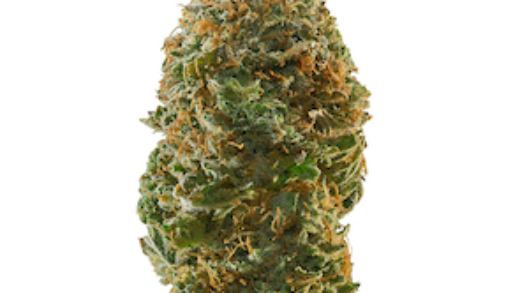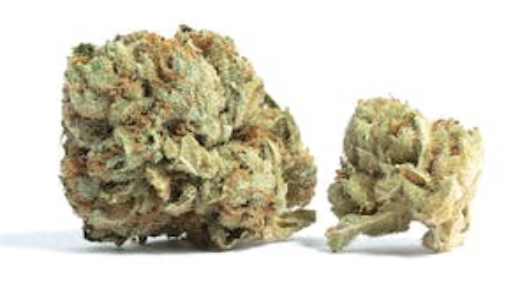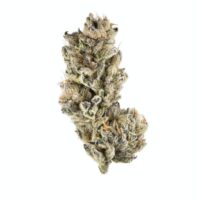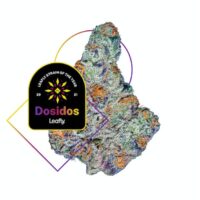This cannabis leaf symptom checker will help you to quickly identify marijuana plant problems and easily diagnose sick marijuana plants!
Learn more about common cannabis leaf problems, nutrients, diseases, stresses, pests, and bugs.
Click on any picture for detailed information about a particular marijuana problem, deficiency or symptom and find out what’s wrong with your plant.
Nutrient problems
Boron excess
When giving your plants too much of the boron component, you will notice the leaves start to get darker and gain a purple hue. Another indicator can be dark brown spots on the leaves and thicker tips.
Boron deficiency
Boron deficiency shows as browning, or burnt leaf edges. You will notice the growth slowing down and may even see twisted or abnormal plant growth.

Learn how to care for a plant with a boron deficiency.
Calcium excess
Too much calcium in your fertilizer may result in the leaves green color darkening and large, light-brown necrotic spots appearing.
Calcium deficiency
When you see the tips of your leaves curling and they start dying off, you may have a calcium deficiency in your plants. The growth will be stunted and young shoots are discolored purple or yellow.

Its stems and branches are weak and roots may turn brown and begin dying off.
Learn what to do with a calcium deficiency.
Copper excess
Too much copper in your nutes results in browning or burnt leaf edges. The growth will slow down and you may see twisted or abnormal plant growth.
Copper deficiency
Signs of copper deficiency in your plants include dark leaves that take on a blue or even purple shade, with the sides of the leaves turning a pale yellow color.

Buds from copper-deficient cannabis can stop maturing if ignored.
Learn how to handle a copper deficiency.
Iron deficiency
An iron deficiency will see your young leaves turning pale yellow and the buds will remain small and under-developed.

Learn more about iron deficiency.
Magnesium excess
Too much magnesium leads to the stems and petioles (the connection between stem and leaf) becoming purple-ish red in color. The leaves will show light brown spotting on the edges.
Magnesium deficiency
Too little magnesium will show yellowing and weakening of the lowest leaves while the rest of the leaves turn inward and start to die off. Growing shoots will start going from pale green to white.

Learn how to solve a magnesium deficiency.
Manganese excess
An excess of manganese will result in a speckling or patchy pattern on the leaves. The top leaves and newer growth will appear damaged.
Manganese deficiency
Shortness of manganese will slow the plant’s growth. Its leaves will pale with yellowing between the veins. New leaves turn entirely yellow.

Learn how to handle a manganese deficiency.
Molybdenum excess
A molybdenum excess shows as mottled, spotted leaves and abnormal coloring that starts at the leaf’s center.
Molybdenum deficiency
A molybdenum deficiency will result in discoloration of leaf edges: orange, red, or pink may appear. Older leaves located towards the base start to yellow.

Learn about handling molybdenum deficiency.
Nitrogen excess
Too much nitrogen will show yellowing of leaves is traveling upward fast.
Nitrogen deficiency
Too little nitrogen will pale the leaves. Yellowing will occur between the leaves or they may turn completely yellow. The leaves start to sag and wither and old leaves begin falling off,
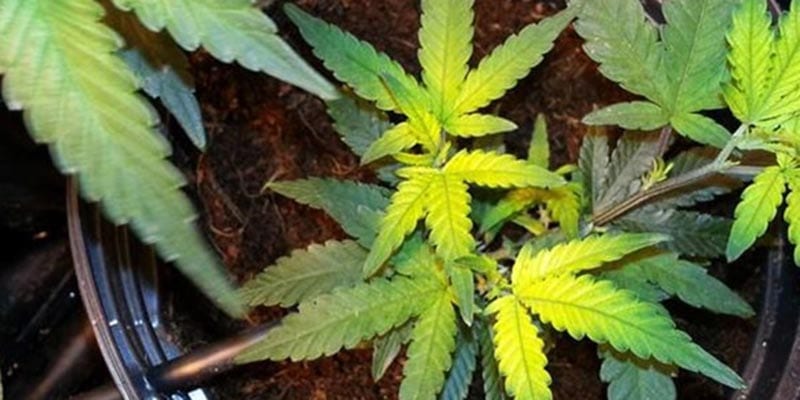
Learn more about Nitrogen Deficiency
Nutrient burn
Nutrient burn is caused by overfeeding your plants, resulting in the tips of the leaves browning and curling.
The ‘burns’ will spread when left untreated until the leaves are crispy and twisted.

Learn more about Nutrient Burn
Ph fluctuations
Unstable pH values can affect the nutrient intake of your cannabis plants, resulting in brown spots appearing around the middle and lower parts of the leaves of your cannabis plants as a sign of stress.

Learn more about PH Fluctuations
Phosphorus excess
An excess of phosphorus will result in mottled or mosaic-patterned leaves. They will darken in tints of green, blue, or gray and the lower leaves will thicken and show bronze, purple, or brown spots.
Phosphorus deficiency
A deficiency of phosphorus will be visible on the leaves and stems. The leaves will yellow, twist and curl, and its tips will show burning and die off. Older leaves will start falling off.
The stem will start to color red or purple and new growth will stunt or look twisted. Even the roots may show rot.

Learn how to handle a phosphorus deficiency.
Potassium excess
Potassium is the K in NPK fertilizer. Give your plants too much and the leaves will show dark, brown spots with the leaves’ edges turning brown and looking burnt.
The plant will stretch eerily tall and will have large spaces between the nodes.
Potassium deficiency
Shortness of potassium shows on the leaves. They will pale and the lower, older leaves will yellow and fall off.
The leaves will show spots and browning of the tips they will start to curl, either under or upward. You’ll notice the growth slowing down and the buds not getting fatter.

Learn how to handle a potassium deficiency.
Sulfur excess
Too much sulfur in your nutrients will show in the upper leaves and newer growth appears damaged.
Sulfur deficiency
Shortness of sulfur will pale the color of the leaves, even turning lower leaves, and the veins turning yellow. The plant will grow slower and its buds won’t thicken.

Learn how to manage a sulfur deficiency.
Zinc excess
A plant that received too much zinc will get speckled or you will see a patchy pattern. It will grow wider and may stop growing higher than normal.
Zinc deficiency
A zinc deficiency will have the leaves curling under and the tips may appear burnt. Newly grown leaves are yellow and appear with veins.

Diseases
Algae
Algae is a common problem when growing weed hydroponically. It’s difficult to avoid especially if you’re using organic nutrients on your hydroponics.

Signs of algae build-up on your cannabis plants include wilting and distorted leaves.
Learn more about algae in your medium.
Bud Rot
Identifying bud rot is tricky since the first sign (when the leaves near your plant’s buds turn yellow) can be mistaken as a sign of nutrients flowing to grow their buds.

Avoid losing your largest buds by preventing high humidity and ensuring excellent air circulation among your plants.
Learn how to prevent bud rot.
Leaf septoria
More commonly known as yellow leaf spots, leaf septoria happens when your plants contract a type of harmful fungus that attacks them.

These leave tell·tale spots that contain the fungus spores at their center.
Learn how to restore leaf septoria.
Powdery mildew
The most common and prolific mold for cannabis is powdery mildew.

It appears on the leaves as a fine white powder that can spread to the rest of your plant, interrupting photosynthesis and causing the leaves of your cannabis plants to turn yellow before eventually falling off.
Learn how to get rid of powdery mildew.
Fusarium
Fusarium is a terrible fungus that can humble even the most experienced growers.

While most fungi are treatable, there’s nothing you can do against fusarium. It lies and waits in the soil, attacking the roots of your plants by rotting them, which interrupts your plants’ nutrient and water intake.
Fusarium doesn’t show symptoms until it’s too late.
By the time you see 1 or 2 affected plants, it will only take days before your entire batch of plants is dead.
Learn more about fusarium.
Verticillium wilt
Verticillium, like fusarium, can lie and wait in the soil for years without ever being detected.

It attacks the roots of your plants, causing brown discoloration as it makes its way into the xylem to block the flow of nutrients and water throughout your cannabis.
This block causes parts of your plants to wilt from being deprived of nutrients.
Learn more about verticillium wilt.
Root rot
Root rot is caused by your plant not getting enough oxygen through its roots due to either a fungal infection or overwatering.

Signs of it include curled and droopy leaves that may include burnt-looking edges.
Additionally, the overall appearance of the plant can look weak and wilting.
Learn how to prevent root rot.
Damping off
This condition weakens and eventually kills your seedlings.

It’s caused by many different fungi, most commonly pythium, botrytis, and fusarium.
These fungi attack the stem of your seedlings, turning them limp and then killing them.
In some cases, the condition can even prevent germination entirely.
Learn how to restore damping off.
Pests
Learn how to safely and effectively keep pests off your weed plants so you can prevent them from ruining your crop.
Ants
Aphids can come in various colors, but they share the same level of inconvenience when you find them on your plants.

It only takes a week for a young aphid (nymph) to grow into an adult, producing up to 80 offspring.
However, what makes these insects a real pain is that they leach nutrients from your cannabis plants.
They also excrete what’s called ‘honeydew’ – a sweet substance that attracts sooty mold that can ruin your plants and attract other insects such as ants.
Learn more about ants on your plants.
Aphids
Learn how to get rid of aphids.

Caterpillars
Caterpillars are one of the most common pests you can run into when growing cannabis outdoors.

They’re not particularly hard to spot since some have vibrant colors.
These pests damage your plants by munching on the leaves, leaving holes in the leaves and their excrement on your plants – including on your buds.
Learn how to keep caterpillars away.
Cutworms
Cutworms chew the tops of your seedlings off.

They prefer to attack vulnerable seedlings instead of larger, vegging cannabis plants. You won’t find cutworms crawling around your plants.
They’re sensitive to light and prefer to burrow into the soil near the stem of your plants.
Learn how to get rid of cutworms.
Crickets and grasshoppers
Whether it’s crickets, grasshoppers, or locusts, any long-legged insect is a sign of trouble in your garden.

Like caterpillars, these insects will eat and leave holes in your cannabis plants’ leaves.
However, these pests can also eat and chew through your plants’ stems.
Learn how to keep crickets and grasshoppers off your grow.
Birds
Birds are a particular problem for outdoor growers.

In some cases, they can be considered pests since they steal and dig out your seeds, ruining your batch of plants before they could even grow into seedlings.
You can spot a bird problem by checking for bird feces around your growing area.
Learn how to keep birds off your plants.
Cats and dogs
When it comes to pets, cats and dogs can be somewhat of a problem when you’re growing weed.

This is because they’re naturally curious animals, with dogs likely chewing on the stems of your cannabis plants or digging holes in your garden.
Cats can also damage your plants when they leave their excrement and urine in your garden.
Learn more about cats and dogs and your cannabis plants.
Deers
When food is scarce, animals like deer can often get desperate and search for anything to eat.

In some cases, they’ll even consider eating cannabis despite normally ignoring plants with a strong smell.
Additionally, deers are fairly smart and will often return to your garden once they discover a staple source of food (your cannabis plants).
Learn more about deers and your outdoor grow.
Gophers and moles
Gophers and moles make their homes by burrowing and creating tunnels beneath the soil, which has the immediate problem of damaging your plants.

Additionally, both rodents can eat the roots of your plants.
You’ll know if you have a gopher or mole issue once you see mounds around your garden.
Learn more about gophers and moles in your garden.
Rats and mice
Rats and mice are among the most common types of rodents you can come across, despite rarely ever encountering them.

They’re sneaky little animals that can be quite the pest in your outdoor garden.
You’ll know when you have a rat infestation when you start seeing chew marks on the stalks of your plants.
Learn more about rats and mice on cannabis.
Fungus Gnats
Fungus Gnats are tiny insects that resemble flies at first glance.

You may notice some of them buzzing near the soil of your plants.
They lay their eggs in moist soil where a larva will spend all of its time attacking your young plant’s roots and root hairs.
Learn how to get rid of fungus gnats.
Leaf miners
True to their name, leaf miners are a type of insect that burrows inside your plant’s leaves to eat the leaf tissue of your plants.

You can immediately spot leaf miners by the trail they make on your plants’ leaves.
Learn how to get rid of leaf miners.
Snails and slugs
Snails and slugs may be slow, but they can do some serious damage to your plants if they go unnoticed.

They don’t just eat the leaves, they can also develop a taste for the buds of your plant.
You can tell if you have a snail problem by the telltale trail of slime on the scalloped leaves of your plants.
Learn how to get rid of snails and slugs.
Spider mites
Spider mites are hard to spot, but they’re also one of the most prolific pests that you can have trouble dealing with in your garden.

They lay hundreds of eggs and mature in less than a week.
Signs of a spider mite infestation include tiny speckles on your plants’ leaves, which result from them feeding on the plant cells.
Learn how to get rid of spider mites.
Whiteflies
Whiteflies are a type of moth that behave similarly to spider mites.

They hang underneath your plants’ leaves and feed off of them, which causes white spots to appear on the leaves.
Learn how to get rid of whiteflies.
Thrips
Thrips are tiny insects that feed on your cannabis plants by using their rasping mouthparts to scrape the surface of leaves and suck up the ooze secreted from the damaged area.

This causes silver or bronze-colored spots to appear on your plant’s leaves.
If the infestation isn’t addressed, the damaged leaves could start dying.
Learn how to get rid of thrips.
Stresses
Heat stress
Heat stress is caused by overexposure to high temperatures and long light cycles.

It appears as yellow or brown spotting on the leaves most exposed to light.
They can also appear burned in parts that directly receive light.
Lastly, they may display browning and curling tips, similar to nutrient burn.
Learn more about heat stress.
Humidity and temperature
Humidity and temperature can be a problem for your cannabis plants.

You’ll know that the humidity level is too high when mold starts appearing on your plants.
You can also tell if the level is too low when your plants’ buds look dry.
The same goes for temperature; too high can cause yellowing and browning in your plants.
Too low will impede the growth of your cannabis, resulting in stunted plants.
Learn about the correct levels of humidity and temperature.
Pruning mistakes
Pruning can damage your plants as much as it could help increase their overall yield.

Aggressively pruning can result in your plants failing to recover properly, producing tiny buds by the time they’re ready to be harvested.
Learn how to correctly prune cannabis.
Airy and loose buds
Airy and loose buds generally occur after exposing your plants to high temperatures for too long.

Lack of light and nutrients are also factors that affect the size and shape of your buds.
Learn how to prevent airy and loose buds.
Clones won’t root
There are two ways to know if your clones are taking root or not.

The first is by gently tugging your cuttings.
If there’s no resistance, your clones haven’t taken root yet.
You could also check by observing if there are new growths on the cuttings. Learn more on how to do this in this marijuana cloning article.
Learn how to handle clones that won’t root.
Stretching plants
Your cannabis plants can stretch for many reasons.

The three main ones are lack of nutrients in the soil, improper lighting schedule, and unstable temperatures.
You can tell if your seedlings stretch if their stems are elongated towards their provided light source.
Learn how to handle stretching plants.
Hermaphrodites
Cannabis plants have a trait that allows them to produce both male and female sexual organs on the same plant despite being dioecious.

It’s a survival instinct that kicks in when too much stress is applied to your plants.
To tell if you have hermied plants, check the buds of your pre-flowering cannabis plants for male pollen sacs and bananas.
Learn about plants turning hermaphrodite.
Seeds won’t germinate
There are a couple of reasons why your seeds won’t germinate.

The most common problem is seeds with poor genetics.
When it comes to cannabis, the better the genetics of the seed, the higher its chances of germinating become.
Additionally, other factors such as the environment and the age of your seed can help determine whether or not they will germinate.
Learn more about seeds that won’t germinate.
Plants won’t flower
If your cannabis plants aren’t flowering, one of the big reasons could be the light cycle.

Photoperiod cannabis plants require a specific 12 hours of light and 12 hours of darkness to kickstart their flowering phase.
Learn more about plants that won’t flower.
Knocked down plants
Although your plants must get enough breeze to develop a more robust stalk and branches, too much can lead to your plants getting knocked down.
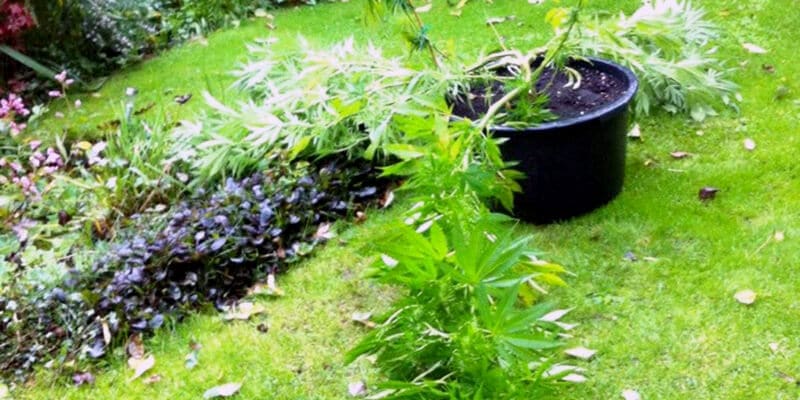
In most cases, it also shreds a lot of the foliage from your plants and even breaks the branches.
Learn how to restore knocked down plants.
Hard or soft water
If you noticed that your plants are stunted and have darker colored leaves, it may be from hard water.

This type of water has high concentrations of phosphorus and magnesium.
Hard water can also cause nutrient lockout.
Signs of it are yellow leaves (due to potassium deficiency) and stunted growth from a phosphorus deficiency.
Learn more about hard or soft water.
Extreme weather
Extreme weather can cause a few cannabis cultivation problems.

One of the main issues is nutrient runoff caused by intense rainfall, which can lead to stunted growth.
Other factors include temperature – extremely low temperatures slow down growth.
Extremely high temperatures stress your plants and cause brown and yellow leaf spots to appear on your plants.
Learn more about growing in extreme weather.
Overwatering and underwatering
You’ll be able to tell if you’re overwatering your plants if you see the leaves drooping.

This means the roots aren’t getting enough oxygen from the waterlogged soil.
For plants that aren’t getting enough water, you’ll notice that the leaves and branches may begin to droop.
Learn more about over- and underwatering.
Soil problems
Soil problems in your cannabis plants arise from many different factors and appear in different ways.

One common problem is excess or lack of necessary nutrients that your cannabis needs for its healthy growth and development.
Other reasons, such as the presence of harmful microorganisms like fungi and bacteria, can also be considered a type of soil problem.
Learn more about preventing and solving soil problems.
Our Plant Protector Sets will help you prevent a lot of these issues. Read comments from these happy customers and see for yourself!
Happy growing!

